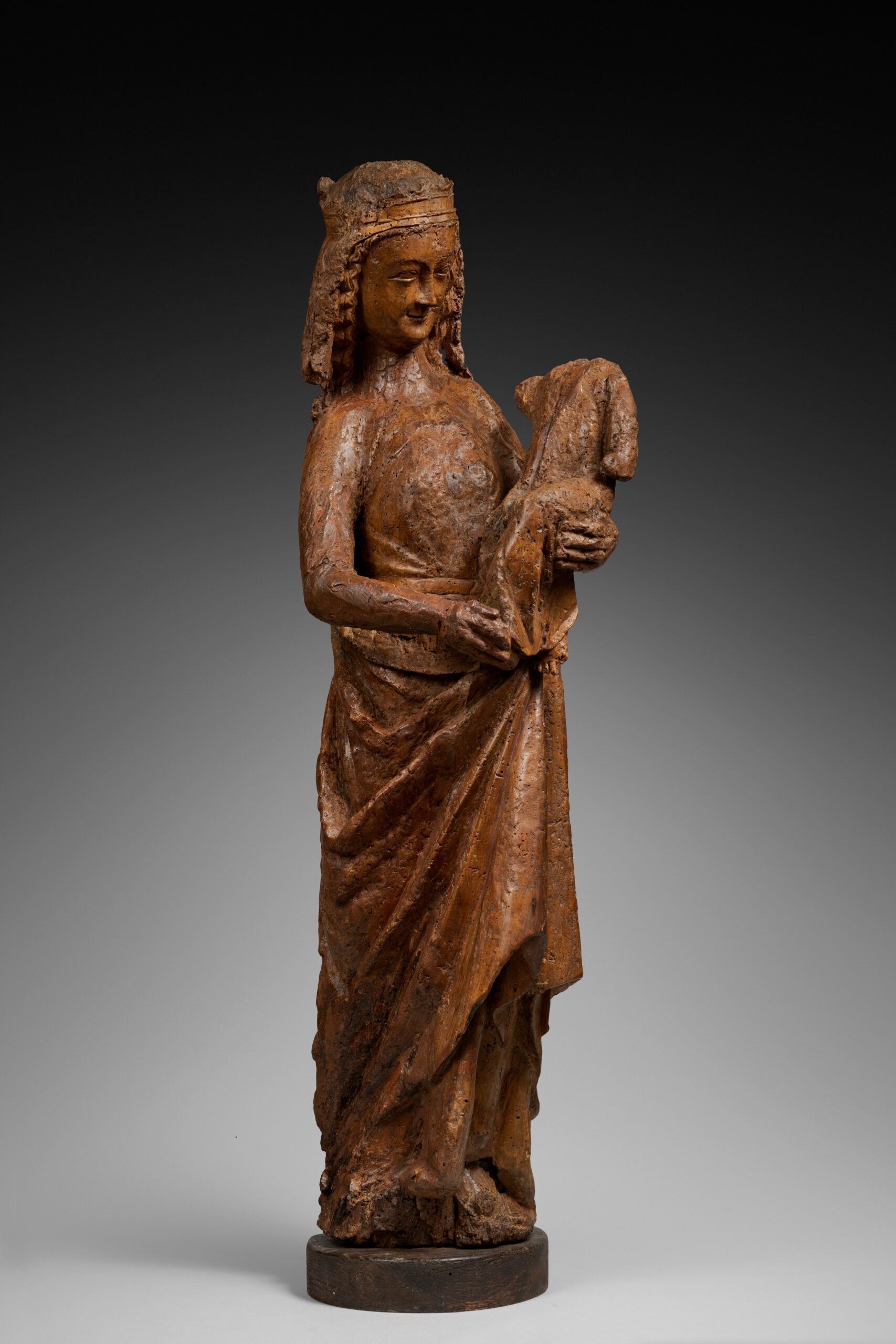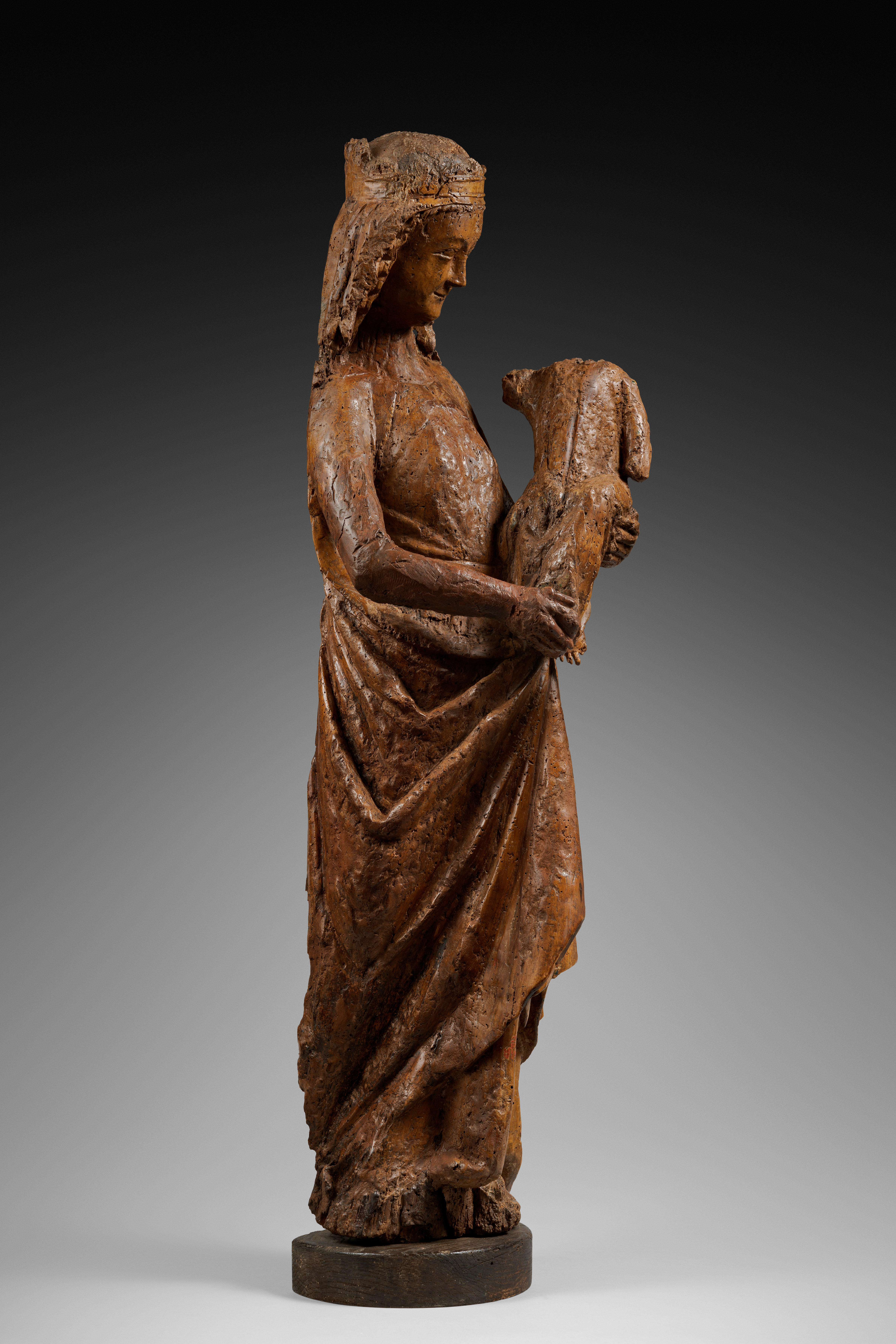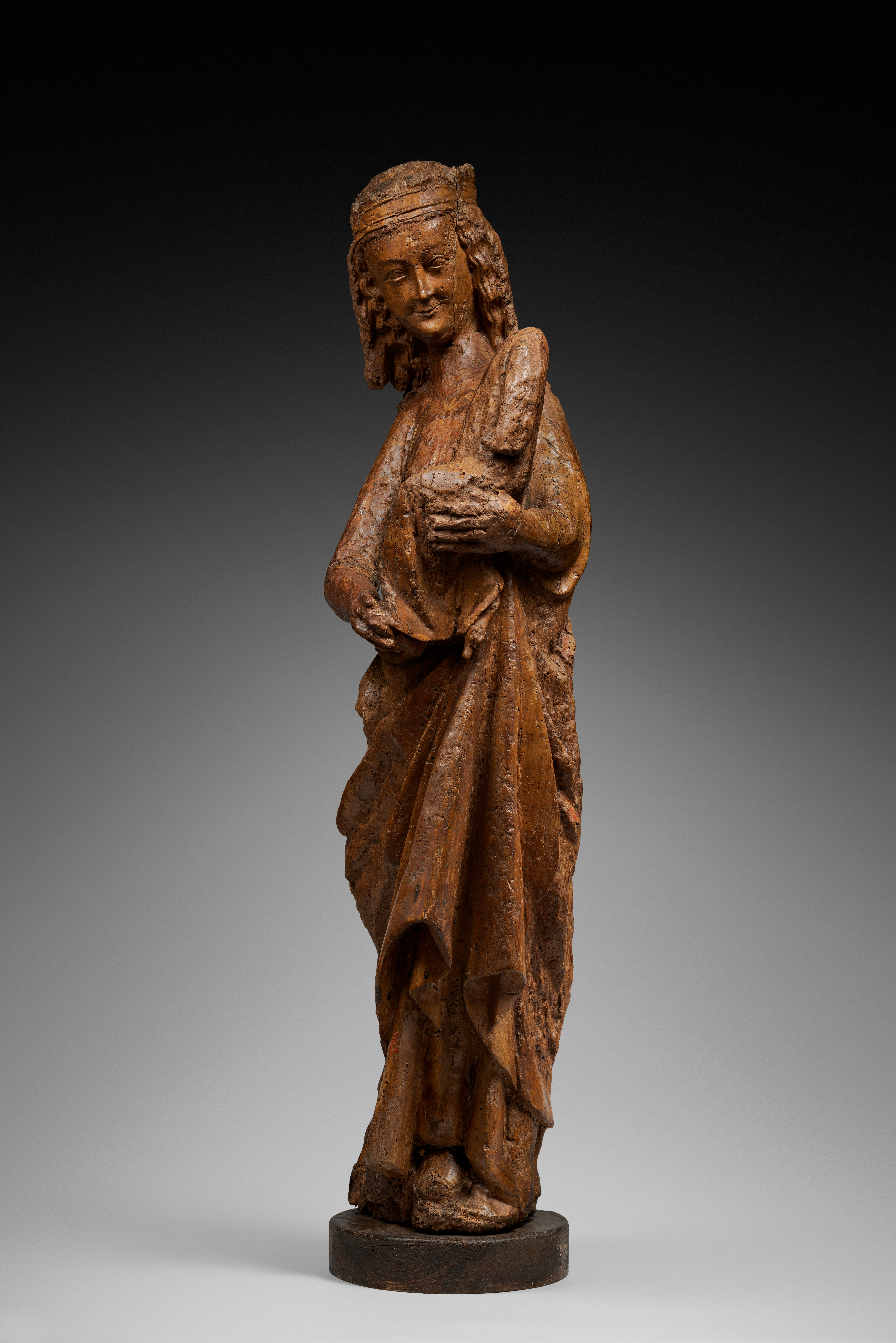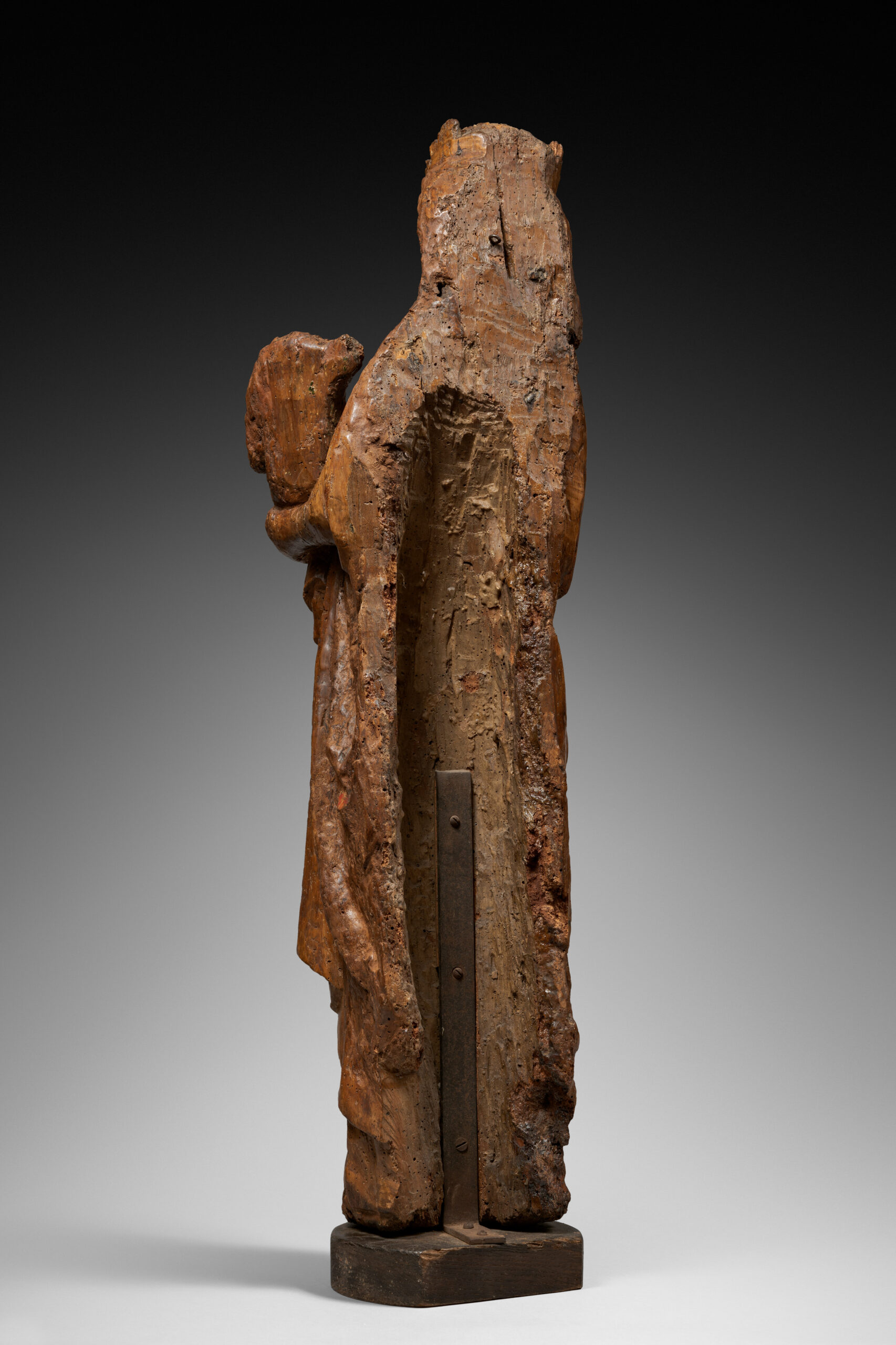Description
This Virgin and Child, with her slender, slender body and narrow shoulders, is a continuation of the Marian statuary of the mid 13th century.
She is dressed in a long dress cinched at the waist by a thin belt. Her shoulders are covered by a mantle, one side of which runs down in front of her bust to her left arm, beneath the child. The drape is hollowed out by a succession of large V-shaped pleats and long oblique folds.
Slightly haunched, she turns her head towards her child. Her wavy hair is covered by a short veil on which rests a crown. Her beautiful face, with its fine, regular features, is marked by a small, straight nose, almond-shaped eyes and a delightful smile.
This Virgin, full of maternal gentleness, is holding her son in her arms. She carries him high on her left arm and holds his little foot in her right hand. Jesus is dressed in a long flowing tunic.
The back of the sculpture has been hollowed out to prevent it splitting during the drying process. At the top of the skull, a hole used to stabilise the sculpture on the workbench when it was being made is a reminder of the working methods used by sculptors at the time.
The turning movement of the body places this Virgin and Child in the tradition of Parisian sculpture from the third quarter of the 13th century.
The facial features, the short veil and the child’s position are reminiscent of the Virgin and Child from the Sainte-Chapelle, an ivory masterpiece in the Louvre. Here, however, Mary’s face is adorned with a more smiling grace. The small size of the head and the elongated silhouette are also reminiscent of certain works of goldsmithery or ivory from the north of France.
It can also be compared with the Virgin and Child from Wargnies, also probably modelled on the Virgin from the Sainte-Chapelle.
This rare sculpture thus fits in perfectly with the production of Virgin and Child in the last quarter of the 13th century, during the reign of Philip the Fair.
Perfect masters of their chisels, these artists transcended the 13th-century tradition they were still nourished by, to create a style that combined simplicity and elegance, naturalism, idealism and restraint in perfect balance.
Bibliography :
Exposition Paris 1998, L’Art au temps des rois maudits -Philippe le Bel et fil 1285-1328, Galeries nationales du Grand Palais, catalogue, pp 62-711 F.




